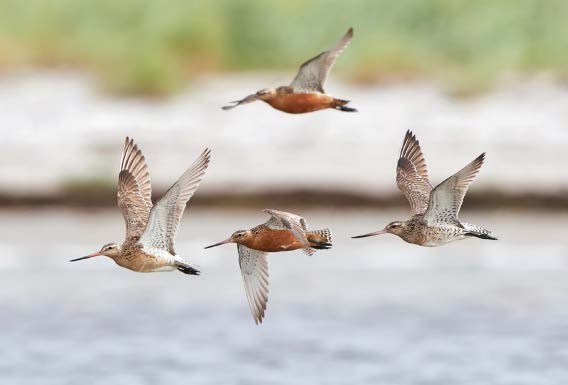WINGING IT
The question of where songbirds and swallows go in winter puzzled humanity for millennia. Early observers came up with various theories— which were mostly wrong.
• Many people believed that birds hibernated.
• Aristotle theorized that the redstarts that he saw in summer (thrushlike flycatchers, not to be confused with the American warblers also called redstarts) changed coloring and shape to become the European robins of winter.
• A 12th-century British theory held that geese grew underwater in crustacean shells before appearing each winter. (For this reason, the marine crustaceans called barnacles were named after the barnacle goose.)
• British minister and scientist Charles Morton wrote in the late 17th century that birds likely migrated into space on a 2-month flight: "Whither should these creatures go, unless it were to the Moon?"
• Well into the 20th century, many people believed that migrating hummingbirds rode on the backs of geese (although geese actu ally start migrating long after hummingbirds do). Although nobody takes these ideas seriously anymore, actual facts about migration can be almost as strange.

Photo: Denja1/Getty Images
The bar-tailed godwit makes the longest known nonstop migration, flying 7,000 miles in 8 days over the ocean between Alaska and New Zealand.
PREPARING FOR TAKEOFF
• Songbirds fatten up for migration, sometimes literally doubling their weight to guarantee maximum energy. They're helped by a hormonal change called hyperphagia, which drives them to eat more and store more body fat.
• Pre-migration, birds undergo other changes. Fresh new feathers grow in to maximize flight efficiency and endurance. Often, these feathers are less colorful than in summer, making the birds less conspicuous to predators.
• Hemoglobin in a bird's blood increases before migration, for maximum aerobic efficiency. Reproductive organs shrink, trimming unneeded weight.
ALONG THE FLYWAY
• Many species that seem to stay all year are